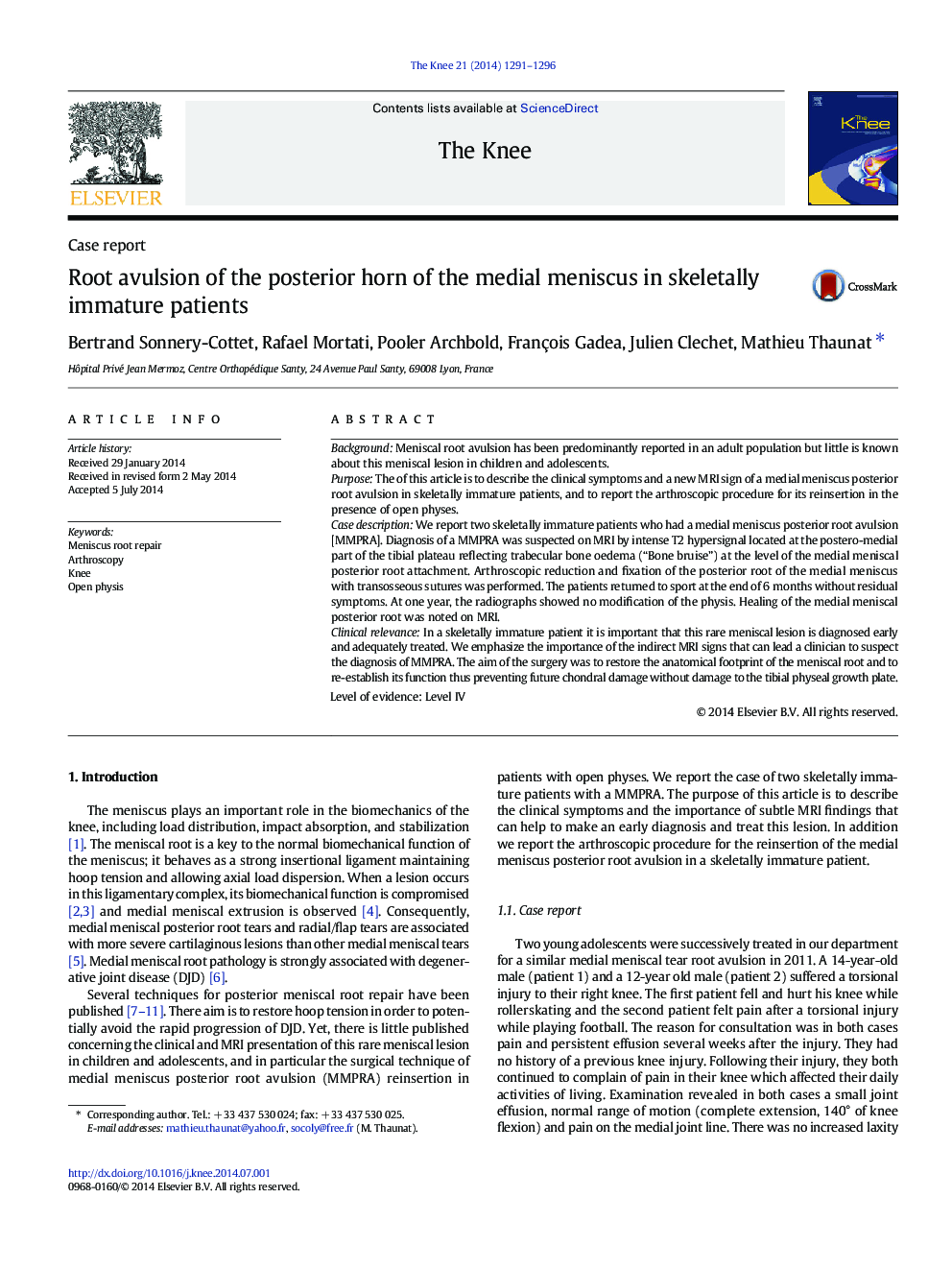| کد مقاله | کد نشریه | سال انتشار | مقاله انگلیسی | نسخه تمام متن |
|---|---|---|---|---|
| 6211393 | 1267213 | 2014 | 6 صفحه PDF | دانلود رایگان |
- Medial meniscal posterior root tears are associated with severe cartilaginous lesions.
- Subtle MRI findings can help to make an early diagnosis.
- This lesion must be sutured using an arthroscopic procedure.
- The Medial Meniscus root reinsertion technique is suitable for adolescent
BackgroundMeniscal root avulsion has been predominantly reported in an adult population but little is known about this meniscal lesion in children and adolescents.PurposeThe of this article is to describe the clinical symptoms and a new MRI sign of a medial meniscus posterior root avulsion in skeletally immature patients, and to report the arthroscopic procedure for its reinsertion in the presence of open physes.Case descriptionWe report two skeletally immature patients who had a medial meniscus posterior root avulsion [MMPRA]. Diagnosis of a MMPRA was suspected on MRI by intense T2 hypersignal located at the postero-medial part of the tibial plateau reflecting trabecular bone oedema (“Bone bruise”) at the level of the medial meniscal posterior root attachment. Arthroscopic reduction and fixation of the posterior root of the medial meniscus with transosseous sutures was performed. The patients returned to sport at the end of 6Â months without residual symptoms. At one year, the radiographs showed no modification of the physis. Healing of the medial meniscal posterior root was noted on MRI.Clinical relevanceIn a skeletally immature patient it is important that this rare meniscal lesion is diagnosed early and adequately treated. We emphasize the importance of the indirect MRI signs that can lead a clinician to suspect the diagnosis of MMPRA. The aim of the surgery was to restore the anatomical footprint of the meniscal root and to re-establish its function thus preventing future chondral damage without damage to the tibial physeal growth plate.Level of evidence: Level IV
Journal: The Knee - Volume 21, Issue 6, December 2014, Pages 1291-1296
